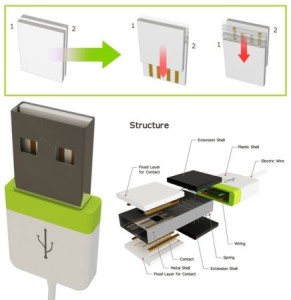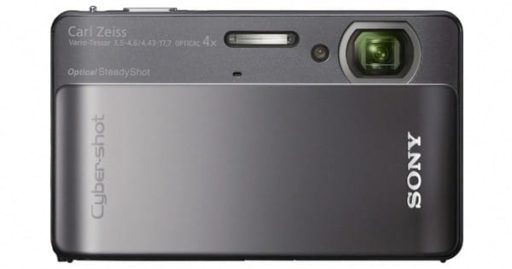After the success of Avatar in cinemas and the flood of 3D technology introduced at trade shows like CES 2010, 3D TV is finally becoming a reality in our technology life. All the major players are well and truly on the 3D bandwagon and they’re set to make a lot of noise to try and entice consumers on board too. To help you navigate the 3D waters as various companies spruik their particular brand of 3D technology we’ve taken a look at what’s on offer, when it will hit shelves and how much it will cost.
Save on HDTV offers with Flat Screen TV Deals.
Panasonic
Panasonic debuted the world’s first 3D Full HD Plasma Home Theater System at CEATAC Japan in 2008 and is aiming to sell the world’s first Full HD 3D (FHD3D) home theater system through a partnership with US retailer Best Buy. The system will consist of a 50-inch Panasonic VT25 plasma 3D TV, 3D capable DMP-BDT350 Blu-ray player and one pair of active shutter glasses. The retailer will be selling the system at a launch event at the Union Square Best Buy in Manhattan on March 10 with plans for several hundred Best Buy stores to have VT25 displays in the near future.
Panasonic’s VT25 series are FHD3D sets that provide full 1080p resolution to both the left and right eye and will be available in four screen sizes ranging from 50- to 65-inches.
The system is expected to sell for around US$3,000, while a 50-inch VT25 on its own is expected to cost around US$2,500. These prices represent a discount of close to 50 percent compared to Japanese prices recently announced by Panasonic and is designed to help the company achieve its target of selling one million 3DTVs worldwide this year.
Samsung
LCD
In a sign that 3D TVs will be a major battleground for manufacturers this year Samsung also announced its 3D capable C7000, C8000 and C9000 Series LED TVs will also be hitting store shelves in the US from this month. The rollout will begin with 46- and 55-inch models from the C7000 Series, followed by 46- and 55-inch models from the C8000 and C9000 Series appearing in April. May will see the availability of the 40-inch C7000 model, while the biggest and best 65-inch C9000 Series will be the last to arrive in July.
Samsung also plans to be the first to bring 3D TVs to the UK and other countries in Europe with models appearing in stores sometime this month in presumably roughly the same order as the US releases.
Prices range from US$2,000 to $3,300 for the C7000 Series, US$2,800 to $5,000 for the C8000’s, and US$6,000 to $7,000 for the C9000 Series. Samsung won’t be bundling any glasses with their 3D TVs, but has announced it will include a starter kit consisting of a 3D Blu-ray Disc of Monsters vs. Aliens and two pairs of Samsung 3D active shutter glasses with the purchase of a Samsung 3D-ready HDTV and Blu-ray player from March 21.
For those looking for a cheaper option Samsung is also releasing a non-LED LCD TV in the form of the 46-inch 750 Series, which will be available from May for US$1,700.
Plasma
Although Samsung has been pushing its LED LCD TVs the company hasn’t abandoned plasma with six of the eight models in the company’s 2010 Ultra-Slim Plasma HDTV line being 3D-enabled. The 7000 and 8000 Series will both feature 50-, 58- and 63-inch screen sizes and will range in price from US$1,800 to $3,500 for the 7000 Series and US$2,100 to $3,800 for the 8000. All models and sizes are due to be available this May.
Along with the ability to display 3D content from a 3D capable Blu-ray player all of Samsung’s 3D HDTVs feature a built-in 3D processor that is capable of rendering 2D content into 3D in real time – although just how well this compares to native 3D content remains to be seen.
Sony
Although Sony has said it will wait until June 10 to introduce its first 3D TVs in the US, (just in time for the World Cup), the company has just announced pricing and release dates for its first 3D TVs in Japan. The LX900, HX900 and HX800 series all share Sony’s new Monolithic design with the LX900 and HX800 series LED edge backlit and the HX900 series featuring LED epicentral backlighting with local dimming.
The HX800 series is made up of 40- and 46-inch screen sizes and will be released in Japan for 22 million yen and 28 million yen respectively. The HX900 series adds Intelligent MPEG noise reduction and a FeliCa remote control and comes in 46- and 52-inch screen sizes priced at 390 thousand and 470 thousand yen respectively (approx US$4,333 and $5,220).
To enjoy 3D on these models though buyers will have to shell out extra for a TMR-BR100 IR emitter (5,000 yen or approx. US$55) and TDG-BR50 3D glasses (12,000 yen or approx. US$133). This added expense is true for pretty much every 3D TV hitting the market and can add quite a chunk of change to the original outlay depending on the size of your family…. then again, they are no longer the cardboard and cellophane specs of the past. Sony claims its glasses are of a higher quality than the rest of the industry but expect third party glasses to flood the market in the not too distant future.
Luckily the LX series includes two pairs of 3D active shutter glasses, and comes with an IR emitter built-in, along with face recognition and a wireless network connection. Available in 40-, 46-, 52- and 60-inch screen sizes prices start at 290 thousand yen (approx. US$3,220) for the 40-inch model and continue up to 590 thousand yen (approx. US$6,555) for the 60-inch.
LG
LG has previously stated it is aiming to sell as many as 400,000 3D TVs this year on its way to 3.4 million in 2011. At CES in January the company announced its first offering would be the 47-inch LD360 due to hit store shelves in the UK in April. Now known as the LD920 the unit will now only be available for commercial use. There’s no news on why the LD360 was pulled from the consumer line-up but the fact the model used passive glasses and wasn’t 1080i capable may have had something to do with it. Whatever the reason LG has announced the Infinia LX9900 LED 3DTV that will use active shutter glasses and will be 1080p capable will be released in the UK in May.
The company has also previously stated a full line-up of 3D models would be unveiled in the second half of the year, which is kind of on the vague side. But an accidental leak from LG purportedly gives a few more specific details. The company apparently plans to ship 3D glasses in mid-April with a 3D-compatible LX9500 series, (which is supposedly the same as the LH9500 announced at CES), shipping in the second week of May. About the same time a second 3D-compatible series dubbed LX6500 will also ship. A 3D Blu-ray player, the BD580, will also ship in May.
But keep in mind none of this has been confirmed by LG with a spokesman for LG telling CNET, “We cannot confirm the specifics of products that haven’t been announced.”
Toshiba
Keeping up the vagueness Toshiba has only said its 3D TV range was in the making with a UK release date of Q4 this year, with full details not expected to be announced until September at IFA 2010.
Philips
As we covered recently, Philips 3D-ready 9000 series that will require a 3D upgrade pack consisting of two pairs of Active Shutter glasses and a wireless adapter is due out sometime this year. Screen sizes start at 32-inches (making it the smallest 3D capable TV yet announced) and range up to 46-inches.
Hype and Hope
There’s no doubt that the major manufacturers have pegged 2010 as the year for putting 3D TVs in people’s living rooms and competition looks set to be extremely fierce as each player attempts to stake a claim on its share of the market. With manufacturers like Panasonic and LG setting sales targets of one million units for this year and 3.4 million units in 2011 respectively, it remains to be seem just how big that market will be.
In their favor the 3D TV manufacturers may benefit from huge success of Avatar and the subsequent upswell in interest of 3D technology. This interest is set to continue with the number of 3D films coming out of Hollywood set to increase along with the introduction of 3D TV broadcasts – most notably with this year’s Football World Cup.
Also, the prices for 3D capable TVs aren’t completely out of the reach of the average consumer – something that isn’t usually the case with the introduction of next generation technology. Because TV manufacturers were able to make use of existing manufacturing facilities instead of building new ones has helped keep prices down.
On one hand, 3D is certainly creating a buzz. On the other, there’s a hell of a lot of TVs sitting in people’s living rooms that aren’t all that old. Sure, like it or not we’re a throwaway society but how many people are going to be willing to trash the big-screen HDTV that’s only a few years old.
For those who can’t wait to get 3D into their home and have the cash to splurge, there’s also the drawbacks of early adoption to consider – look at how many revisions to the Blu-ray spec there were. The more prudent among us might just wait until 2nd generation, but the push is undoubtedly on to get these sets into homes and 3D TV is here to stay.














Great review! All the TV models introduced by different companies are all competitive and high end. It's really hard to choose which is the best among them.
Pingback: Pouring in the stock of Nokia
LG with the announcement of latest TV Infinia and Next generation 3D TV it has made the other brand to fight harder for the share of pocket. Based on the latest and better technology like the IPS ans FPR it makes more desirable to the customer.
Sony’s HX 920 looks promising. 3d technology is very innovative. I just love the idea watching 3d movies at home! I’ll get one of these.
Magadheera weds Princess Upasana, royal wedding